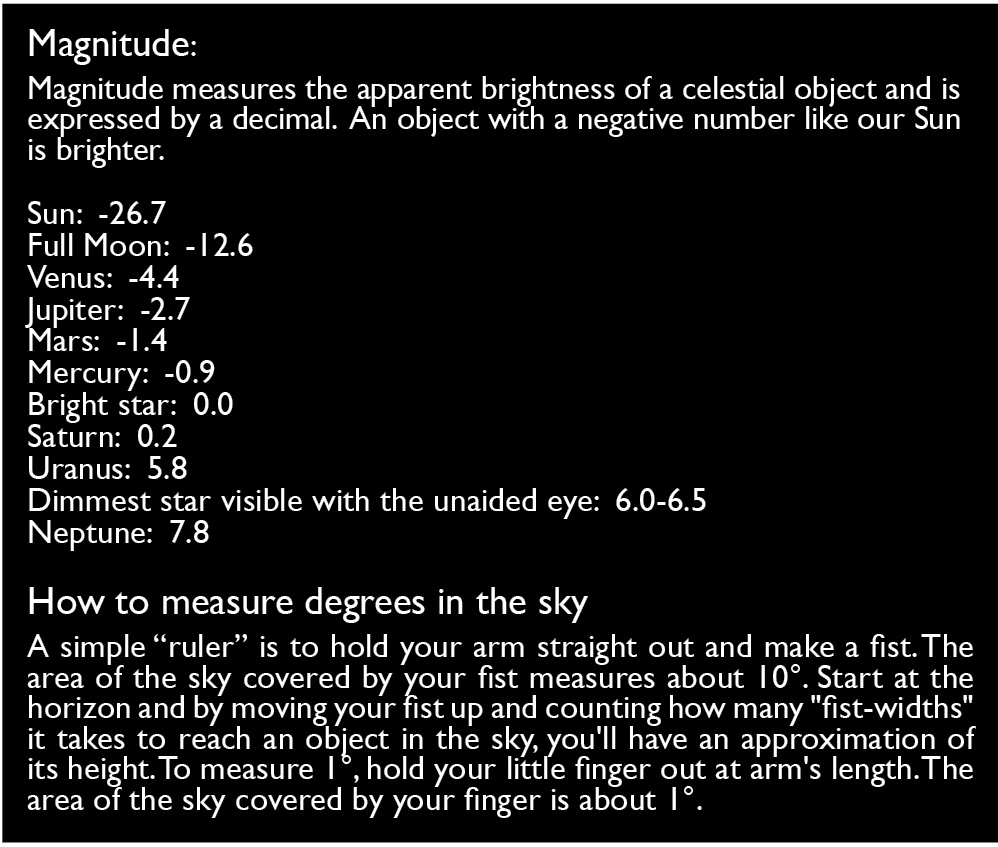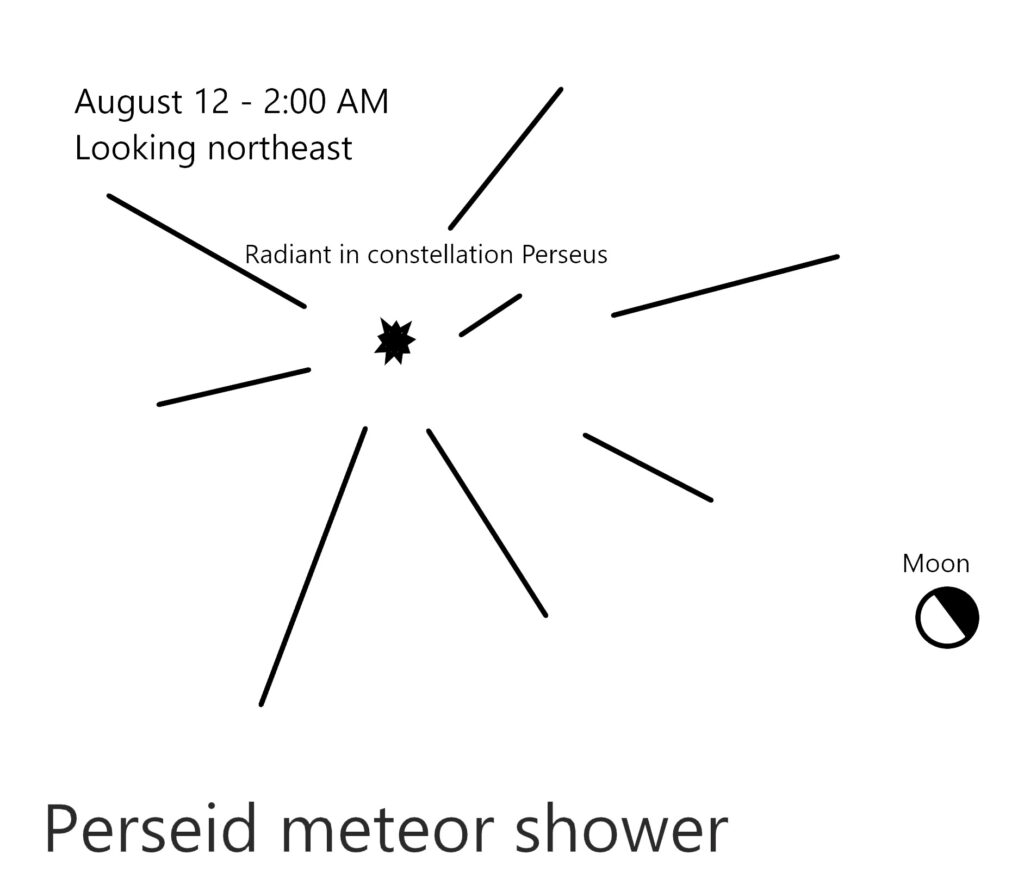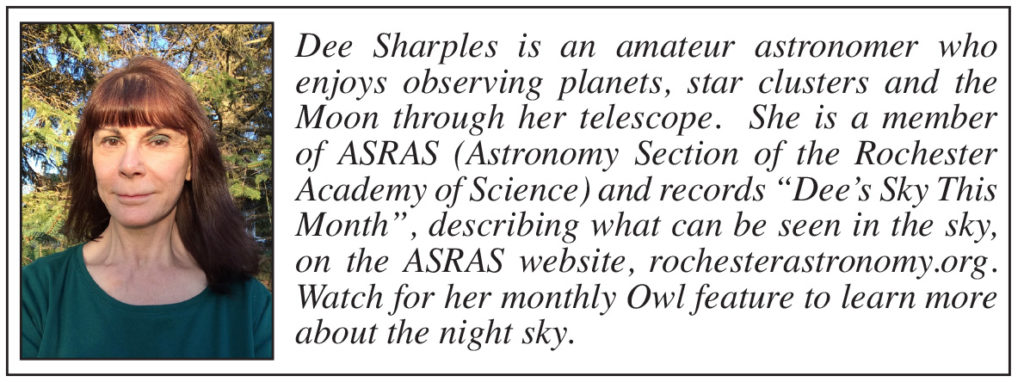The Night Sky-August Under the Stars
A bounty of planets will be traversing the sky either in the evening or early morning hours before the sun rises. Seven of the eight planets in our solar system will be on display in the sky—five will be visible naked eye, two will require additional visual aid to see.
A beautiful pair of planets, which we’ve been enjoying for a few months, is still with us. Look for bright Jupiter at magnitude -2.7 and dimmer Saturn at magnitude 0.2 about 20 degrees above the horizon in the southeast at 11:00 PM on August 1st and due south at midnight by mid-month.

The best time to spot the planet Mars is the last week of August when it will be shining at a bright magnitude -1.4, looking like a reddish-hued star in the eastern sky at midnight. By morning, it can be found in the south before dawn.
Uranus, one of the ice giant planets, will be high in the eastern sky near the end of August. By early morning, it will have moved to the south. Although Uranus shines at a faint magnitude 5.8, it will be close to the limit of most observers’ naked -eye vision so binoculars will make it easier to spot. It should be easy to find as it will be located in a patch of sky with no other bright stars. The other ice giant planet is Neptune, which will shine at a dim magnitude 7.8, and although you can find it with binoculars looking like a faint star, a telescope will reveal its bluish distinctly round disk.
For early morning risers, Venus shining at a brilliant magnitude -4.5 is a beacon in the eastern sky before the sun rises. On August 15, a crescent moon lies within 4 degrees of Venus and is a pretty sight. Mercury is visible naked eye but only for the first few days in August. Look for it only 5 degrees above the horizon 45 minutes before sunrise, shining at a bright magnitude -0.9. You’ll need a flat horizon free of obstacles like buildings and trees to see it.

If finding the planets doesn’t keep you busy enough, the fabulous Perseids meteor shower will put on a great display this year. You don’t need any special equipment to enjoy the Perseids, just a reclining chair and a jacket or wrap to keep any night-time chill at bay.
You can spot the most meteors per hour after midnight on August 12 when the Earth has rotated and is now traveling directly into the stream of debris. The meteors are particles of dust and debris left behind by Comet 109P/Swift-Tuttle as it passed through our solar system numerous times throughout history. The Perseids are known to produce fireballs, extremely bright meteors which can leave a long trail of smoke.

The radiant, or area of the sky from which the meteors will appear to originate, will be from the constellation Perseus which can be seen high in the east around 2:00 AM. The meteors can be seen anywhere in the sky so just let your eyes casually wander the sky until a streak of light catches your eye. The Perseids meteors enter the Earth’s atmosphere at an average speed of 133,000 miles per hour. If you can travel to a dark sky site or rural area away from city lights, you should be able to see from 50-75 meteors per hour until dawn begins to brighten the morning sky.

Strasenburgh Planetarium
Public observing on Saturday nights from the roof of Strasenburgh Planetarium has been canceled until further notice. For updates go to: rochesterastronomy.org. Once viewing resumes, observation information is available at: www.rochesterastronomy.org/the-strasenburgh-scope/.